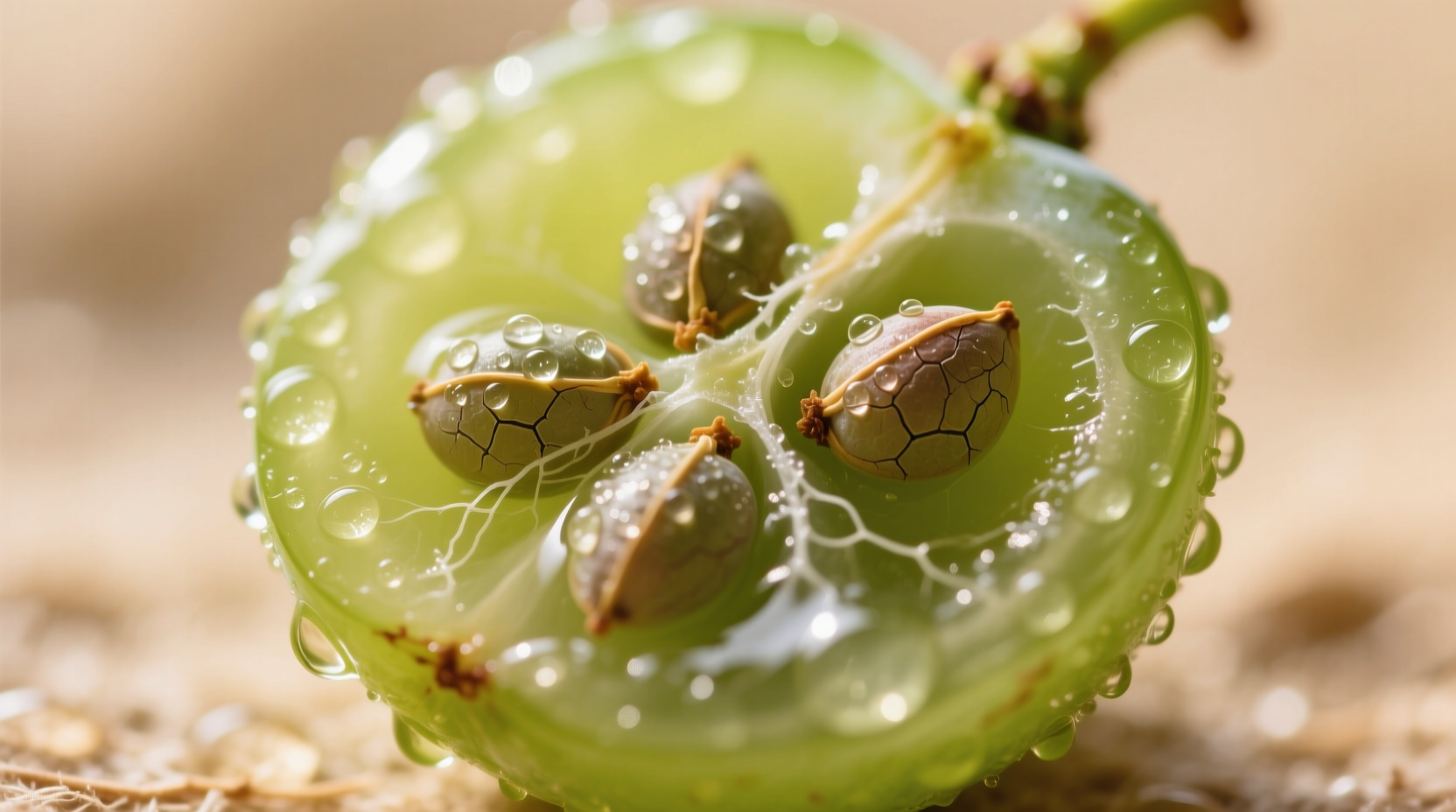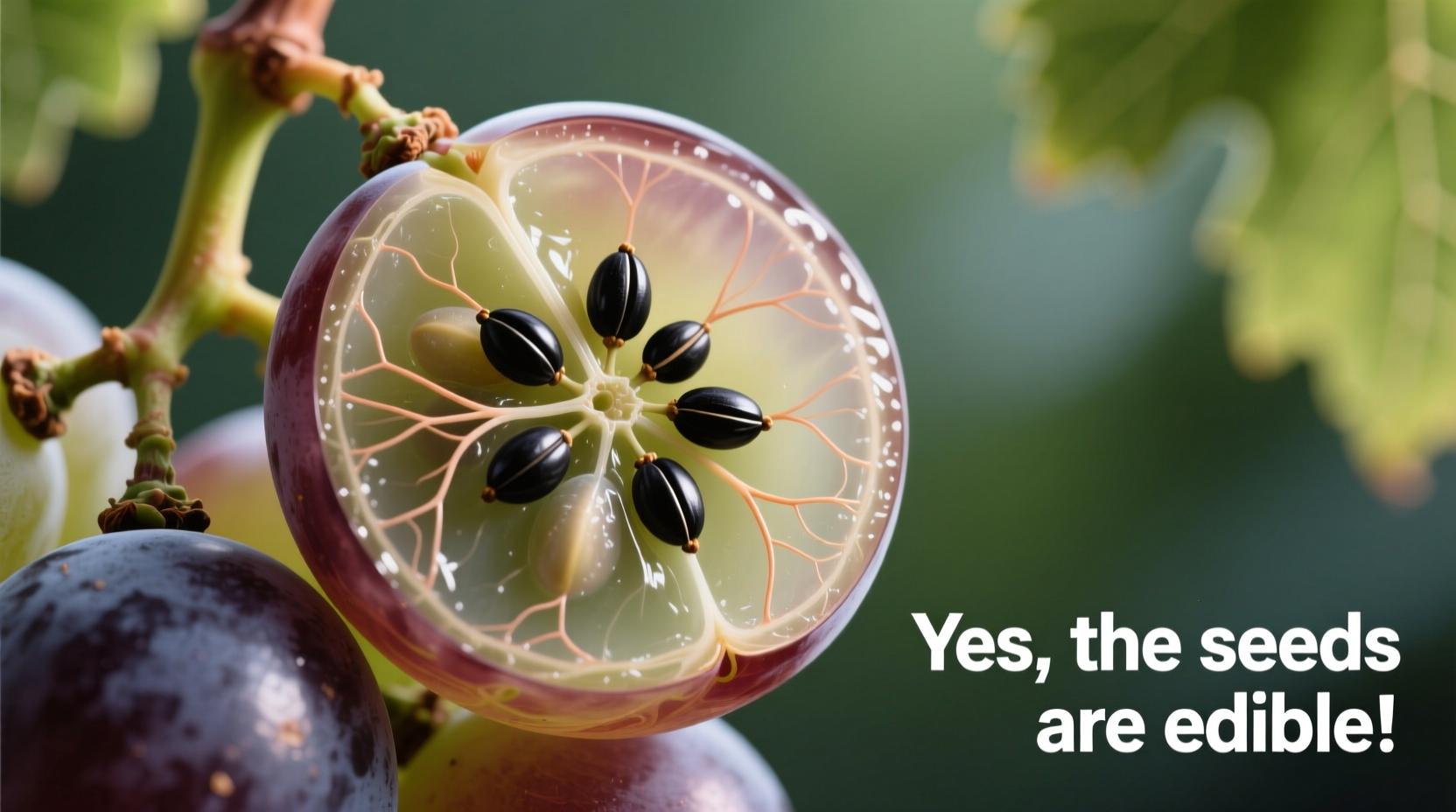Many people wonder whether those small, crunchy bits inside grapes are meant to be eaten or spat out. If you've ever found yourself hesitating before swallowing a grape seed, you're not alone. Understanding what happens when you eat grape seeds can help you make informed choices about your fruit consumption without unnecessary worry.
What Happens When You Eat Grape Seeds
Grape seeds from common table grapes like Thompson Seedless, Red Globe, and Black Monukka varieties are completely safe to consume. Unlike apple or cherry pits, which contain amygdalin (a compound that can convert to cyanide), grape seeds contain no toxic compounds.
When you swallow grape seeds:
- They pass through your digestive system largely intact due to their hard outer coating
- They provide small amounts of beneficial compounds like proanthocyanidins and flavonoids
- They contribute minimal fiber to your diet
Most people don't even notice them unless they deliberately chew the seeds, which releases their naturally bitter compounds.

Grape Seed Nutrition Profile
While you don't get substantial nutrition from accidentally swallowing grape seeds, they do contain some beneficial compounds that have attracted scientific interest:
| Nutrient/Compound | Amount in Grape Seeds | Potential Benefits |
|---|---|---|
| Proanthocyanidins | High concentration | Powerful antioxidants that may support cardiovascular health |
| Flavonoids | Moderate levels | Anti-inflammatory properties and potential cognitive benefits |
| Dietary Fiber | Minimal per seed | Aids digestion when consumed in larger quantities |
| Vitamin E | Trace amounts | Supports skin health and immune function |
According to research published in the Journal of Agricultural and Food Chemistry, grape seeds contain 6-8% proanthocyanidins by weight—significantly higher than what's found in the grape flesh or skin. However, you'd need to consume grape seed extract supplements (not just whole seeds) to get clinically significant amounts of these compounds.
Who Should Avoid Grape Seeds
While grape seeds pose no danger to most people, certain individuals may want to remove seeds before eating grapes:
- Children under 4 years old: Small seeds could present a minor choking hazard for young children still developing chewing skills
- People with digestive sensitivities: Those with conditions like diverticulitis may be advised to avoid small, hard particles
- Anyone with seed aversions: The bitter taste when chewed can be unpleasant for some palates
The American Academy of Pediatrics confirms that whole grapes (with seeds) are safe for children over 4 years old, but recommends cutting grapes in half for younger children to prevent choking—seeds themselves aren't the primary concern.
Practical Tips for Enjoying Grapes With Seeds
If you're comfortable eating grape seeds but want to optimize your experience, consider these practical suggestions:
- Don't chew the seeds: Simply swallow them whole to avoid the bitter taste
- Choose seedless varieties when serving young children or guests who prefer them
- Try different grape varieties: Some seeded grapes like Moon Drops have softer, less noticeable seeds
- Chill thoroughly: Cold grapes make the seeds less noticeable when eating
For those interested in maximizing the potential health benefits, consider that commercial grape seed extract supplements contain concentrated compounds not readily available from eating whole grapes. The National Center for Complementary and Integrative Health notes that while grape seed extract shows promise in preliminary studies, more research is needed to confirm specific health benefits for humans (nccih.nih.gov).
When Seed Removal Makes Sense
There are specific situations where removing grape seeds might be worthwhile:
- Making smoothies or juices: Seeds can create a bitter taste when blended
- Preparing fruit salads for children: Eliminates any choking concerns
- Creating seedless grape jelly or preserves: Seeds can affect texture and flavor
- Catering to guests with strong seed aversions: Improves overall dining experience
The simplest seed removal technique involves cutting grapes in half and gently squeezing out the seeds. For larger quantities, specialized grape seeders are available, though for most home uses, the halving method works perfectly well.
Final Verdict on Grape Seeds
You can confidently eat the seeds in common table grapes without health concerns. While they won't transform your nutrition profile when consumed as part of whole grapes, they do contain beneficial compounds that contribute to the fruit's overall health profile. The decision to eat or remove seeds ultimately comes down to personal preference regarding taste and texture rather than safety considerations.











 浙公网安备
33010002000092号
浙公网安备
33010002000092号 浙B2-20120091-4
浙B2-20120091-4